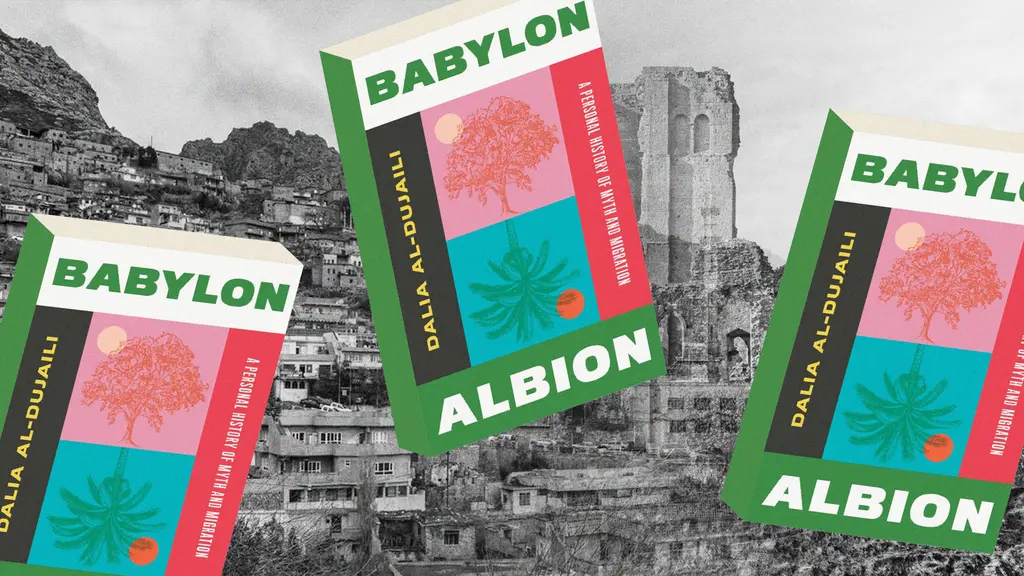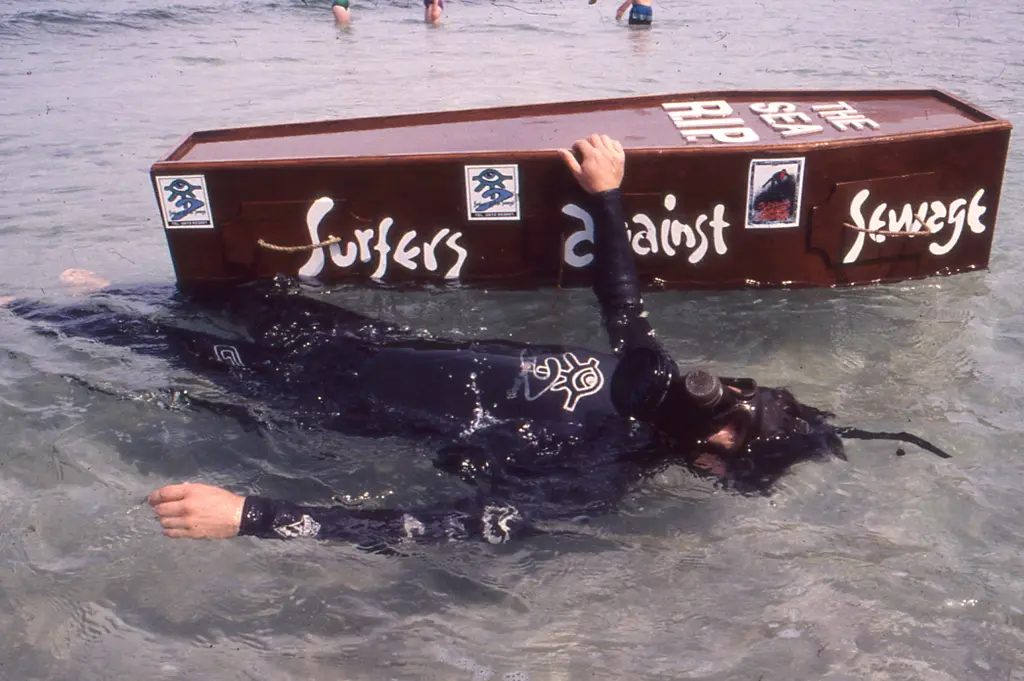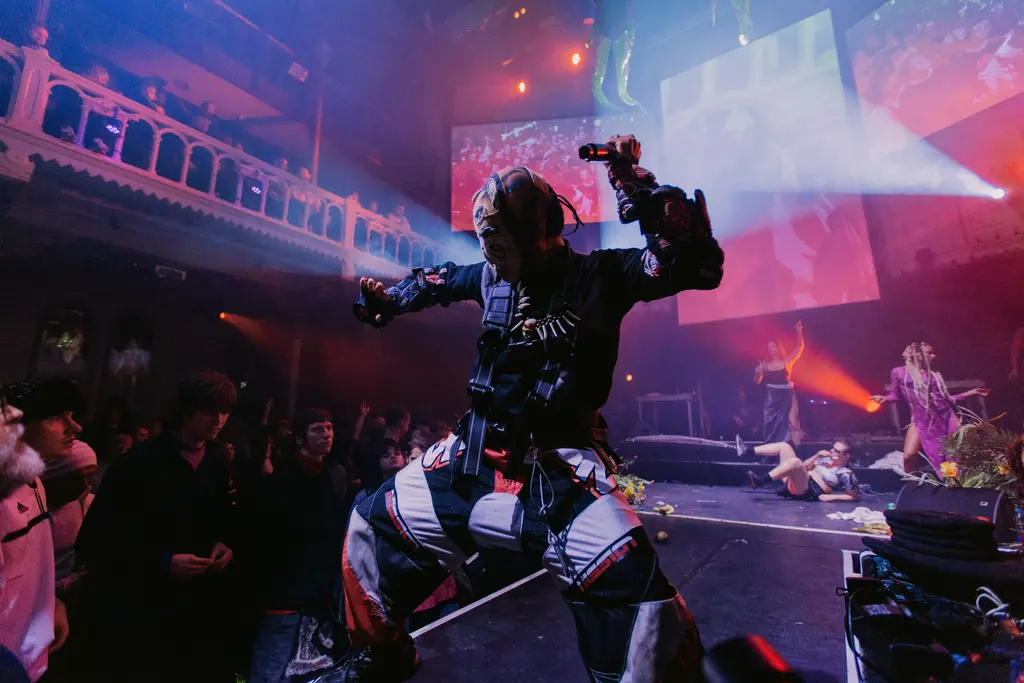Photographer Clint Woodside on the life-changing power of zines
- Text by Andrea Kurland
- Photography by Clint Woodside

Clint Woodside was running on empty when he decided to change his life. He’d been working as a graphic designer for a good 15-year stint – knocking out work to corporate briefs for the likes of MTV – when suddenly he hit a wall. “I just thought I can’t do this anymore,” he says.
Clint is sat in the corner of 71a, Huck’s gallery in East London. His personal revelations are being soundtracked by the tap, tap, tap of tiny nails being hammered into a wall. All around us, bodies fly about, transforming the gallery’s blank space into a veritable DIY fest for Zineophobia, a group photography show that brings together some of Clint’s closest friends: Grant Hatfield, Nolan Hall, Devin Briggs, Ed and Deanna Templeton.
 But none of this would be happening if Clint hadn’t hit that wall. “I was in it far too long and my work just kind of turned to shit and I couldn’t design at all – at least, not the way I used to. For two or three years there was a lot of, ‘What the fuck is wrong with me,’ until eventually I just couldn’t do it anymore.”
But none of this would be happening if Clint hadn’t hit that wall. “I was in it far too long and my work just kind of turned to shit and I couldn’t design at all – at least, not the way I used to. For two or three years there was a lot of, ‘What the fuck is wrong with me,’ until eventually I just couldn’t do it anymore.”
Burnt out on agency life, tired of working to someone else’s brief, in 2008 Clint chose an exit route and started devoting his time to personal work. He also started shooting again – having neglected photography, his first love, for longer than he ever intended – and set up a site to sell his own zines, calling it Deadbeat Club on a whim.
“The name’s a joke,” he says. “The art hustle is some of the hardest work ever. You’re always trying to get your stuff out – there’s a lot of shit that goes around it – and yet everyone always thinks of us as deadbeat artists.”
It wasn’t long before Clint was joined by another deadbeat looking for distraction. In 2011, Ed Templeton found himself relegated to the couch after he broke his leg, a hard pill to swallow for a prolific artist who shoots almost every single day. “I said, ‘Dude, you’re gonna go fucking nuts if you don’t have a project,’” says Clint. “We made a split zine together. One half was his Make-Up Girls series, the other half was my travel journal. It was fun working with someone else, so I figured I should do it more.”
Each zine led to another, including a self-published photobook, Undercover Cars, that embodies Clint’s keen eye for classic Americana. “I woke up two years later and had a full publishing company.”
Today, Clint splits his time between Deadbeat Club – “running around like a chicken” in a constant state of hustle – while also designing books for the likes of Rizzoli and Damiani . He’s put out zines by the likes of Nick Waplington, Angela Boatwright, Tobin Yelland, Cheryl Dunn and Todd Hido. And he’s finally found the balance he was craving, keeping the fire burning through an endless stream of collaboration.

Is it a good time to be self-publishing – to be hustling as an independent artist? For me it’s the only way. Unless people are knocking down your door to make something, what other choice do you have? It’s not like I got Steidl knocking down my door trying to make a bunch of books with me. This is my own way of having an output. This is the most direct way to reach an audience, because if you’re buying my zine you’re buying it from me. Like, ‘Hi, here’s a thing I made, let’s talk about it.’ Anyone can put out a zine and it’s also very cheap to buy a zine – that is a beautiful thing to me. This is a thing you hold – on the internet, people tend to just swipe and go.
Why do you shoot exclusively on film? It’s just what I grew up with. I missed the whole digital revolution because I took a break from photography for 15 years. I was deep in graphic design. Then when I came back, digital was running the world. It just didn’t feel right. I like using film not because it’s a look, but because it’s constraining. You have 36 shots in a roll, so each shot is important. It’s much more about the moment that I’m shooting. With digital you can just shoot and shoot and shoot and try and find a perfect version of this moment, but that moment’s gone. You’re trying to create the moment that’s already gone. Whereas with film, it’s click and you’re done. It’s not always gold. But it’s a realer form to me.
What is the message behind Zineophobia? The title is a joke on the current political climate in the world at large – combined with the fact that we make zines all the time. We all shoot our own way but have these open-ended interpretations of the story we’re presenting. No certain photo is going to be like, ‘This is about x.’ Everything is left to the viewers’ interpretation.
My stuff is all about the hometown where my father grew up in upstate New York. In comparison, I’ve seen most of Ed’s stuff – he’s making a giant cluster, which is going to be nuts – and a bunch of it is all about growing up in Southern California. And that’s what most guys are going to be showing, because that’s their lives.

What triggered you to start shooting a new project in upstate New York? It’s all about the area my father grew up in, Heuvelton. My dad had kind of a heavy life up in this farm town. It’s a very, very small town – like one street, four stop lights and that’s it. There used to be a cheese packing plant that was independently owned, but then I think Kraft came and bought it out. That was a big part of the town that was holding the town together.
A lot of the people who live in the town are the people that are getting left behind in this new economy where manufacturing and farming are all dying off. Everyone’s kind of angry at these people right now for electing Trump. So, I wanted to go up there and get a better understanding of who they are. They’re just people that are in a tight spot and need help, and believed all this crap that they were being told. Obviously a lot of us knew it wasn’t really going to happen.
And has it been a personal journey for you? Have you connected with your father’s story through this work? A little bit. We don’t talk about my dad’s side of the family that much, which is kind of crazy, but that’s just how it is. So it’s been really interesting to go back. For example, I was shooting in a school – a school that has all the grades, so from kindergarten to 12 – and the secretary working the front desk knew my dad when he went to high school there. And I went to speak to the principal to make sure it was ok that I was shooting there, they were like, ‘Wait, you’re Tom’s kid? I know him, we graduated together!’ It’s crazy because my dad left there in like the ’60s. So it’s interesting to see how much of a connection and how tight a unit of a town these people are.

Has it helped you better understand how, as a nation, the US elected Trump? Yeah, I think so, it really has. I get it, for sure. A lot of people were duped and it’s a fucking bummer. And it makes them look not as intelligent as East Coast liberals or whatever… All these people, like me, that are far removed from what that life is like, have these preconceived notions of how these farmers are just idiots, and that’s completely wrong. It’s just a real bummer to be in this position in America: it’s rough here right now.
What’s your process of putting together a body of work, how do you know when you’re getting there? You kind of just know you’re done with it when you stop taking the photos. An example is the undercover cars stuff that I did a little while ago. I was shooting that stuff like crazy, and finally there were moments when I’d see them, and think, ‘I don’t need that anymore.’ You just keep driving. And when that starts happening, that’s when I think you know you’re done with a certain project.
But with this one, it’s a heavier subject and it’s not as binary. Like you see an undercover car, take the photo and there you go. With this it’s much more conceptua. No one photo is going to be the one that answers all the questions. So, I don’t know when I’m going to be done with this. The idea is to convey the feeling of living in one of these small towns. I don’t know if it means I have to move to these towns to really be able to encapsulate and understand what that’s about, but I know I have a lot of work to do still.

What role do the other Deadbeats play in your process as a photographer? I think it’s more just moral support than anything else. When we first got going we were showing each other what we were up to, and I feel that hasn’t been going on as much lately. A lot of us has been doing well on our own lately, but if something needs to get done [we get together]. Like yesterday Grant came over and I helped him print a bunch of stuff for his show. You always go to Ed for good advice on galleries and editing. We all have each other for certain things. It’s like, ‘I’m psyched that you’re a part of this, and let’s figure out what needs to be done.’ We’re kind of a sad support group for each other.
And do you have moments of self-doubt as a photographer? Oh every day. All the time. Constantly. I feel like you’re probably not in touch with what you’re doing if you think what you’re shooting is always the best. Then you’re very lucky but I’m sure you’re not right.
What would be your advice for someone who’s so bogged down by self-doubt, they feel paralysed by it? You can’t let it win. I think the best thing to do, is to print your stuff out, lay it down in front of you and really have an understanding of what the larger thing is that you’re shooting, and embrace it. Whatever’s coming out, don’t worry how stylish you are, or what it compares to. Just keep shooting, and find out what you’re creating and just accept it because that’s what you’re creating.
Being worried it’s not as good as so-and-so’s, or you’re not in the latest annual or some shit like that – that’s fine. If people are reacting, then cool, and if people aren’t reacting, then the right people just aren’t seeing it. So just keep on keepin’ on. Everybody feels like shit, and everybody’s totally worried about what they’re doing, so just accept that and figure out what’s next.

What advice do you have for someone who is inspired by what you do, but is harbouring all their own work because they’re too scared to show it? That they’re fucking up. What’s the point? What’s the point of keeping a stack of things in a closet – except that maybe you’ll be dead and someone will find it, like Vivian Mair. What’s the point of things like that. She’s dead. Not that you need to use this as a vehicle – but she was making that work and it’s a shame that she didn’t get to see how wonderful people think it is. Stuff in a closet is not going to do anybody any good.
Huck x I.P.F Present… Deadbeat Club: Zineophobia runs 19-28 May at 71a Gallery, London.
Private View: Friday 19 May, 6-9pm (RSVP Essential)
Deadbeat Club: Zineophobia is supported by RVCA Artists Network Programme.
You might like

Dalia Al-Dujaili: “When you’re placeless, nature can fill the void”
Babylon, Albion — As her new book publishes, the British-Iraqi author speaks about connecting with the land as a second-generation migrant, plants as symbols of resistance, and being proud of her parents.
Written by: Zahra Onsori

Katie Goh: “I want people to engage with the politics of oranges”
Foreign Fruit — In her new book, the Edinburgh-based writer traces her personal history through the citrus fruit’s global spread, from a village in China to Californian groves. Angela Hui caught up with her to find out more.
Written by: Angela Hui

Meet the hair-raised radicals of Berlin’s noise punk scene
Powertool — In his new zine, George Nebieridze captures moments of loud rage and quiet intimacy of the German capital’s bands, while exploring the intersections between music, community and anti-establishment politics.
Written by: Miss Rosen

The rebellious roots of Cornwall’s surfing scene
100 years of waveriding — Despite past attempts to ban the sport from beaches, surfers have remained as integral, conservationist presences in England’s southwestern tip. A new exhibition in Falmouth traces its long history in the area.
Written by: Ella Glossop

Southbank Centre reveals new series dedicated to East and Southeast Asian arts
ESEA Encounters — Taking place between 17-20 July, there will be a live concert from YMO’s Haruomi Hosono, as well as discussions around Asian literature, stage productions, and a pop-up Japanese Yokimono summer market.
Written by: Zahra Onsori

We are all Mia Khalifa
How humour, therapy and community help Huck's latest cover star control her narrative.
Written by: Alya Mooro

